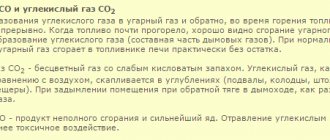When planning the construction of a real Russian bathhouse, laying a stove or arranging ventilation in a steam room, it is extremely important to pay maximum attention to the exhaust gas removal system.
Installation of a chimney in a wooden house should be carried out by professionals who will do the work with the highest quality and without flaws. Otherwise, there is a risk that toxic gaseous products will leak from the stove not into the street, but directly into the place where guests are steaming.
This state of affairs can provoke a situation of carbon monoxide poisoning in people, which is fraught with pulmonary edema, visual impairment, cardiovascular pathologies, encephalopathy, musculoskeletal disorders, heart attacks, lifelong disability and even death. No one wants a trip to the bathhouse to be a death sentence for him or his loved ones, so it’s better to properly work on the ventilation once and continue to follow the rules for using the stove, rather than spending enormous amounts of money on treatment and recovery from CO poisoning.
Causes of poisoning
Bathing procedures in the steam room are famous for their usefulness for all ages and are used even for colds. But there is also a dangerous side to folk tradition.
Often, due to haste and the desire to preserve heat, bathhouse attendants are in a hurry to close the chimney by closing the damper. Unextinguished coals continue to burn out barely noticeably, and carbon dioxide, being a product of this process, enters the room without signaling the danger either by color or smell. This situation develops due to the location of the furnace part of the stove in the steam room.
In the absence of ventilation or its insufficient power, the situation is aggravated and smoke increases.
Poor chimney maintenance, or lack thereof, contributes to the accumulation of burning and soot in the chimney shaft, impairing its functionality.
You can get burned not only from the stove; according to the same principle, poisoning occurs in the smoke of a fire, from improper use of household gas, and some drivers have the misfortune of getting burned in the garage.
Redness of the eyes
Most often, bathing beginners encounter redness in the whites of their eyes. A microscopic red capillary network appears in the corner of the eye. This is already a serious sign of deterioration in well-being.
Most often this happens in people prone to high blood pressure and newcomers to the bathing kingdom.
Not everyone can handle high bath temperatures. If you just get carried away in the steam room, sit on the top shelf longer than the allotted time, your eyes will turn red.
To avoid such troubles, it is necessary not only to reduce the time you enter the steam room, but also be sure to monitor the time you spend in it. A bath cap is necessary to protect your head from overheating.
You need to go out to rest more often, be sure to douse yourself with cool water and drink plenty of fluids.
Symptoms of carbon monoxide poisoning in a bathhouse
The pathological effect of carbon monoxide is the formation of a strong compound - carboxyhemoglobin.
The function of transporting oxygen through tissues is completely lost by damaged proteins, resulting in acute oxygen starvation. The brain, heart and lungs suffer the most from lack of oxygen. The first symptoms of fumes in the bathhouse are dizziness, headache, tinnitus, a feeling of pulsation in the temples, nausea, a feeling of “cottoniness” in the legs, lack of air. At this stage, it is often enough to simply go out into the fresh air.
Many steam room lovers attribute this condition to the classic “overheated in the bathhouse.” Such arrogance is especially dangerous if a person is soaring alone. It is important not to miss the first stage and be saved in time.
Further, progressively, weakness, shortness of breath, nausea, vomiting, deterioration of vision and hearing occur. The skin and visible mucous membranes acquire a red tint.
Signs of severe intoxication in the bathhouse are confusion, fainting, rapid and shallow breathing, dilated pupils, pale appearance. Emergency medical attention is required. Possible death.
How to get rid of an unpleasant symptom?
To get rid of a headache, you need to leave the steam room. At the same time, it is strictly forbidden to rush, fuss, or panic. You cannot run out into the fresh air to breathe oxygen. Any sudden movements can lead to a deterioration in your general condition. A person should lie down on a shelf or bench in the dressing room and place a folded sheet or towel under his feet. Wait about 20 minutes. If the condition improves, consult a doctor on an outpatient basis; if the pain does not subside, call an ambulance.
To choose an effective treatment method, specialists must determine the exact cause of pain. To reduce the range of possible causes of headaches, you can measure your blood pressure yourself. You can get rid of an unpleasant symptom using traditional methods or using folk remedies.
- Drink a small amount of mineral water.
- Freshly squeezed juice from viburnum, lingonberries, and strawberries will help with headaches.
- Additionally, you can take 2 paracetamol tablets and drink a pain reliever.
If the headache is caused by an allergic reaction, it is recommended to take a contrast shower.
- A medicinal decoction based on elderberry, chamomile, and St. John's wort. Use after the body has cooled down.
- Inhalation. Mix 5 parts mint, 2 parts orange, 2 parts chamomile essential oils. Pour the resulting mixture onto the hot stones in the steam room. By inhaling the resulting vapors, you can quickly improve your general condition.
The person needs to be slowly taken outside so that he can get some fresh air. If pain symptoms begin to subside, it is recommended to get a good night's sleep. You can take a pain reliever before going to bed.
First aid if you get burned in the bathhouse
First aid for smoke inhalation in a bathhouse - the victim, depending on his condition and degree of poisoning, must be taken out or taken out into fresh air.
If the injury is mild, the person who has “steamed” in the bath should be given strong coffee or tea to drink in order to tone the nervous system and increase blood pressure.
For moderate damage, inhale ammonia to maintain consciousness and stimulate blood flow to the head. Mustard plasters placed on the chest and back between the shoulder blades will have a good effect in improving blood circulation.
IMPORTANT. A bottle or cotton wool with ammonia should not be brought closer than 1 cm to the respiratory tract.
A seriously injured person should be placed on his back, carefully turn his head to the side, unfasten the collar of his outerwear, if any, and call an ambulance.
Under no circumstances should a person who has lost their temper be left alone. While waiting for doctors to arrive, you should regularly check for a pulse in the carotid artery located in the neck and breathing by putting your ear to the victim’s chest or holding a pocket mirror to his lips.
If any life-supporting parameter ceases to manifest itself, it is necessary to begin urgent resuscitation measures. Indirect cardiac massage should be performed and artificial respiration should be given to the poisoned person. This is done according to the formula: 30 intense compressions on the sternum for 2 breaths.
If the victim is a child, then the likelihood of negative consequences is much higher, since intoxication develops faster due to low weight and imperfect respiratory and circulatory systems.
In cases of poisoning, you should not rely on self-medication. Immediately after, and sometimes even before, providing first aid, you must immediately call an ambulance.
The medical team will give the patient a mask with a supply of pure oxygen and administer the antidote – Acizol. The drug destroys the connection between carbon dioxide and hemoglobin, reducing the harmful effects of hypoxia on body tissue. The sooner it is administered, the less damage to vital organs. This is the fastest way to cleanse the body of toxic compounds.
In the hospital, ventilation with pure oxygen and symptomatic therapy will continue. At first, such a patient will be bothered by arrhythmias and arterial hypotension.
Subsequent treatment
Moderate and severe degrees of intoxication, as well as poisoning in pregnant women and children, are treated exclusively in a medical institution (sometimes an intensive care unit) with the help of oxygen - it is supplied through a special mask or directly into the lungs using a ventilator.
If the patient’s condition causes serious concern, he is placed in a pressure chamber, where oxygen is supplied under a certain pressure
As an antitoxin, the victim is administered Acizol, a specially developed agent that frees hemoglobin molecules from the carbon monoxide associated with them. The rest of the treatment is nonspecific and symptomatic - correction of oxidative processes that are disrupted due to hypoxia, support and normalization of vital signs: blood pressure, pulse, respiration.
After the victim’s condition and well-being improve, he is left in the hospital for some time to monitor his condition and prevent dangerous complications.
Consequences
The results of carbon monoxide poisoning in a bathhouse depend on the dose of the toxic substance received and are divided into early - within a few days, and late - after weeks and months.
The pulmonary system is primarily affected. Symptoms begin with shortness of breath and may end with pulmonary edema, expressed in a strong cough with pink foam.
As carbon dioxide replaces oxygen, the body begins to suffer from hypoxia. The heart muscle strives to compensate for this deficiency by pumping blood at a higher speed. The greater the intoxication, the faster the heart contractions. Such a race is likely to lead to the development of arrhythmia and even myocardial infarction.
The bloodstream carries toxic carboxyhemoglobin to the brain. Impaired oxygen supply leads to dysfunction in different areas of the cortex. On the hearing side, it manifests itself as noise, the appearance of a ringing sound in the ears, and partial deafness.
The effect on the visual analyzer leads to the appearance of fog and “floaters” before the eyes, a decrease in visual function up to loss of vision.
Cerebellar hypoxia is expressed by impaired motor coordination and unsteadiness of gait.
Prolonged oxygen starvation leads to acute cerebrovascular accident - stroke.
Severe brain intoxication can result in seizures and coma. Full recovery from such a lesion is unlikely.
The further the consequences are remote in time, the less likely it is to restore function.
Nervous system:
- impaired memory and attention, possible amnesia;
- loss of coordination, up to complete immobility;
- impaired control of bladder and bowel functions;
- partial or complete loss of vision.
Heart and blood vessels:
- myocardial infarction;
- cardiac asthma;
- angina pectoris.
Respiratory system: frequent complicated pneumonia.
Due to the unstable condition in the next few months after poisoning, you need to monitor your health especially carefully, avoiding overload, hypothermia and contact with infectious patients.
Overheat
Many “newbies” make the same mistake. During their first visits to the bathhouse, they strive to imitate the “old-timers” and match their level, spending a long time in the steam room. However, it is difficult for an unprepared body to tolerate high temperatures. As a result, they are at a loss as to why they get a headache after a bath.
When visiting a bathhouse in winter, it is not recommended to enter the steam room directly from the street. You need to sit in a heated room for some time so that your body gets used to the new temperatures. In the cold, the blood vessels of the brain narrow, and hot air causes them to expand sharply. Ignoring this rule is often the reason that you end up having to look for the answer to the question of why you get a headache after a bath in winter.
Precautionary measures
Carbon monoxide poisoning in a bathhouse is a common phenomenon, but it can be avoided by knowing all the nuances of the appearance of a dangerous compound.
- Do not close the chimney until the coals in the stove are completely burned. Modern chimney manufacturers have taken care of the carbon monoxide safety system: even if the chimney is accidentally blocked, a small channel remains where the dangerous compound continues to be discharged.
- Equip the bathhouse with an appropriate ventilation system. This can be natural ventilation, with holes located at different levels, or a forced aeration system.
- Regularly inspect and clean the chimney structure.
- You should pack an emergency first aid kit in case of poisoning. Sample list of medications:
- Ammonia or ammonia solution;
- Anti-burn ointment - Bepanten or “Rescuer” balm;
- Dressing material - bandage, cotton wool.
- If there is such a need, it is better to postpone drinking alcoholic beverages for 1-2 hours after the steam room. The reason is that the state of intoxication is similar to the first stage of carbon dioxide poisoning.
By following simple safety precautions, carbon monoxide poisoning can be easily avoided.
From the course of inorganic chemistry
Carbon monoxide, also known as carbon monoxide, chemical formula CO is a gas, colorless and odorless, under normal conditions it is lighter than air, it is extremely toxic, and according to the generally accepted classification it is classified as a highly toxic substance. Flammable
Important! It is worth especially emphasizing that carbon monoxide has no odor; sometimes the so-called “carbon monoxide smell” described is nothing more than the smell of organic impurities.
The toxicity of smoke emitted by burning fossil fuels, primarily coal, has been known for a very long time. So there are mentions of this in the works of Aristotle.
Its content is high in the exhaust gases of cars, primarily in obsolete gasoline internal combustion engines with a carburetor power system. Thus, such mechanisms can contain up to 3% carbon monoxide of the total volume in their exhaust gases, and in cases of incorrect operation of the power and ignition system, even more
At the same time, carbon monoxide is a very important raw material for the production of a number of synthetic organic alcohols. The food industry knows the technology of processing meat and meat products with this gas, as a result of which they acquire the attractive bright red color of a fresh product, without changing its taste.
Which doctors should you contact if you have smoke poisoning:
Toxicologist
Is something bothering you? Do you want to know more detailed information about smoke poisoning, its causes, symptoms, methods of treatment and prevention, the course of the disease and diet after it? Or do you need an inspection? You can make an appointment with a doctor - the Eurolab clinic is always at your service! The best doctors will examine you, study external signs and help you identify the disease by symptoms, advise you and provide the necessary assistance and make a diagnosis. You can also call a doctor at home. The Eurolab clinic is open for you around the clock.
How to contact the clinic: Phone number of our clinic in Kyiv: (+38 (multi-channel). The clinic secretary will select a convenient day and time for you to visit the doctor. Our coordinates and directions are listed here. Look in more detail about all the clinic’s services on its personal page.
Preventing headaches when visiting a bathhouse
To prevent a headache after a bath from bothering you, it is enough to ensure that the body is properly prepared for the bath’s recovery.
As an effective prevention, experts recommend the following:
- General hardening of the body. This will allow you to quickly adapt to high humidity and sudden changes in temperature conditions in the steam room. Contrast dousing has an excellent effect - it is a good way to strengthen blood vessels and prevent colds.
- Maintaining a healthy lifestyle. To avoid illness when visiting a bathhouse, you should get rid of bad habits and maintain a healthy lifestyle.
- Balanced diet. A proper diet has a significant impact on the human body. Eating heavy, fatty and spicy foods, as well as drinking alcoholic beverages, can lead to increased blood pressure, strain on the heart, nausea and fainting. Therefore, before visiting the steam room, it is better to give preference to light and quickly digestible food.
- Study of medical contraindications. Before starting bath therapy, it is necessary to identify diseases for which such procedures are dangerous. These include chronic diseases of the heart, kidneys, liver, oncology, hypertension and varicose veins.
- Carrying out aromatherapy. The best prevention of headaches is the use of natural aromatic remedies. Aromatherapy will help you get rid of migraines, fatigue, nervous tension and stress.
If you know why you get a headache after a bath and how to quickly relieve the pain, you can save yourself from the unpleasant consequences of the procedures. And then a bath vacation will become an effective means for hardening and healing the body.
Why is hemoglobin low?
There is no clear reason. It is impossible to talk about the development of pathology every time the hemoglobin level is below normal. This may be a temporary phenomenon caused by trauma with blood loss, surgery, donation, vegetarian diet, and in women, additionally, the menstrual cycle.
The basis for the development of the disease may be pathological processes occurring in the body:
- digestive problems (colitis, enterocolitis, dysbacteriosis);
- bleeding;
- failure of the immune system;
- infection of the body;
- leukemia, lymphoma;
- uterine fibroids, causing bleeding;
- disease of the hematopoietic system;
- tumors of various origins;
- kidney pathology.
It is important to know! During pregnancy, the hemoglobin level is 30 to 20 units below normal. But this is a temporary phenomenon that goes away after the birth of the child, in the absence of chronic diseases.
Why the compound is dangerous: nausea, malaise and more
The penetration of ever-increasing concentrations of CO into the lungs leads to the formation of strong compounds with blood hemoglobin. As a result, carboxyhemoglobin is formed, which has toxic effects that block the flow of oxygen into the blood. Hypoxia forms, leading to suffering of brain cells and all body tissues. As CO concentrations increase, hypoxia begins as weakness and mild nausea, then progresses to more serious forms. The first signs of poisoning may be mistaken by the victim and people around him for fatigue, but then nausea and vomiting progress, headaches and shortness of breath develop. Prolonged inhalation can lead to loss of consciousness and the development of heart failure, strokes or heart attacks, and in severe cases, convulsions and coma, followed by death.
Against the background of inhaling CO, the skeletal muscles relax, nausea and weakness occur, the person understands that he needs air, but cannot move, all movements are given to him with great difficulty. The arteries relax, which leads to a decrease in pressure, and this aggravates tissue hypoxia.
Conditions for intoxication and first manifestations: weakness and drowsiness
All of us remember the school chemistry course, as well as the fact that the combustion process requires access to oxygen. Carbon monoxide is formed when there is a lack of oxygen during the combustion of carbon-containing fuel. Combustion is not complete and high concentrations of CO are released. In the open air, even if the fuel smolders and does not burn, poisoning does not occur; carbon monoxide instantly dissolves in the surrounding air. But it is possible in closed rooms with a lack of oxygen, with the smoldering of various types of fuel, without active combustion. Carbon monoxide, unlike natural carbon monoxide supplied to the gas burners of household stoves and specially equipped with an odorous component, is not noticeable by smell. But the first manifestations of poisoning are yawning, drowsiness and weakness, which relaxes and makes you lose vigilance. Weakness, initially quite mild, increases as the CO concentration increases, becoming more pronounced. Due to weakness, one is drawn to sleep, and this is extremely dangerous, as it can lead to death.
Online consultations with doctors
| Consultation with a child psychologist |
| Consultation of general issues |
| Neurologist consultation |
| Family doctor consultation |
| Nephrologist consultation |
| Consultation with an endocrinologist |
| Consultation with a specialist in the field of stem cell treatment |
| Consultation with a sexologist |
| Consultation with an immunologist |
| Consultation with a massage therapist |
| Consultation with a cord blood bank specialist |
| Consultation with a neurosurgeon |
| Consultation with an anesthesiologist |
| Consultation with a cosmetologist |
| Consultation with a neuropsychiatrist |
Medical news
6 simple habits to avoid getting colds all year round: recommended by all doctors, 03/17/2021
Are seafood becoming unhealthy?, 01/05/2021
Digital Pharma Day. Be at the forefront of the digital transformation of the pharmaceutical industry, 10/09/2020
The EpiLaser network has the lowest prices for ELOS hair removal in Kyiv, 09.14.2020
Health news
The expert named three differences between a cold and COVID-19, 01/05/2021
There are more than 86 million cases of COVID-19 in the world, 01/05/2021
The speed of spread of COVID-19 depends on climatic conditions, 06/11/2020
Researchers have counted six varieties of coronavirus, 06/11/2020
Clinical picture
According to the severity of carbon monoxide poisoning (Luzhnikov E.A., 1989) they are distinguished: mild poisoning, moderate poisoning, severe poisoning.
In mild cases of poisoning appears
- headache in the temporal and frontal regions, often of a girdling nature (the “hoop” symptom), dizziness, tinnitus, nausea, vomiting, minor visual impairment;
- patients complain of general anxiety, fear, difficulty breathing, sore throat, dry cough, feeling of thirst, burning face, discomfort in the heart area;
- characterized by an increase in blood pressure to 150/90 mm Hg, moderate tachycardia;
- loss of consciousness (from the moment of poisoning) is not observed;
- the carboxyhemoglobin content in the blood is 15-30% (on average the threshold level is 20% of total hemoglobin).
Average degree of carbon monoxide poisoning:
nausea, difficulty breathing, feeling of lack of air, shortness of breath are noted; disturbance of mental activity is manifested by agitation or stupor, up to coma; pathological reflexes, miosis, mydriasis, and occasionally anisocoria appear; in most cases, the pupils are of normal size, with a lively reaction to light; The appearance of facial skin hyperemia is noteworthy; there must be at least a short-term loss of consciousness from 1-2 to 20 minutes; carboxyhemoglobin content in the blood is 30-40%.
In severe cases of carbon monoxide poisoning, the following are determined:
- coma of varying depth and duration - from several hours to a day or more, there may be convulsions, pathological reflexes, paresis, paralysis;
- the skin of the victim at the scene of the incident may be scarlet; upon admission to the hospital in a state of severe hypoxia, their color changes to cyanotic;
- due to the development of acute rhinolaryngitis and tracheobronchitis, breathing problems may occur, including stopping;
- on the part of the cardiovascular system (CVS), signs of acute left ventricular failure are formed, changes on the ECG are not specific and in most cases are manifested by signs of myocardial hypoxia and coronary circulatory disorders: the amplitude of the R wave decreases in all leads, especially in the chest leads, the S-interval T shifts below the isoline, the T wave becomes biphasic or negative;
- when analyzing acid-base balance - metabolic acidosis;
- carboxyhemoglobin content in the blood is 50-60%.
Pulse oximetry data in case of CO poisoning attract attention and require correct interpretation. Carboxyhemoglobin absorbs light in almost the same way as oxyhemoglobin, therefore, instead of saturating hemoglobin with oxygen, the pulse oximeter in such patients shows the sum of the percentage concentrations of HbCO and HbO2
For example, if SpO2 = 65% and HbCO = 25%, the pulse oximeter will display an SpO2 value close to 90%. Thus, with pulse oximetry against the background of carboxyhemoglobinemia, the SpO2 indicator turns out to be overestimated.
In some cases, CO poisoning can be combined with a burn of the respiratory tract. As a rule, in these cases, the severity of the patient’s condition is due not so much to CO poisoning (which can be mild or moderate), but rather to a burn to the respiratory tract. In the acute period, acute respiratory failure may develop due to prolonged intractable laryngobronchospasm, and in the next day severe pneumonia develops.
As a concomitant of CO poisoning, such patients may develop compression syndrome (crash syndrome, positional trauma) - it develops in cases where the victim remains unconscious in one position for a long time, touching parts of the body with a hard surface or pressing a limb with the weight of his own torso.
In this case, the nutrition of muscle and nervous tissue and skin is sharply disrupted, which leads to their death. The affected areas become sharply painful, increased in volume, dense (up to stone density).
As a result of the breakdown of muscle tissue, myoglobin (a protein that is part of muscle tissue) enters the blood; if the injury area is extensive, a large amount of myoglobin affects the kidneys - myoglobinuric nephrosis develops. Thus, the patient develops the so-called myorenal syndrome, characterized by a combination of positional trauma and renal failure.
For moderate and severe carbon monoxide poisoning, a characteristic complication is the rapid development of hypoxic bullous dermatitis and polyneuritis, appearing 10-15 hours after poisoning.
What is low hemoglobin?
There are medical standards for hemoglobin content in the blood, different for each age category:
- women over 18 years of age – 115–140 g/l;
- men – 135-160 g/l;
- children from 5 to 12 years old – 115–145 g/l;
- for pregnant women – 100–110 g/l.
Low hemoglobin indicates that the organs are poorly supplied with oxygen; the body does not have enough of such an important trace element as iron. If the problem is not intervened in time, it can develop into a pathology. Cells cannot breathe without hemoglobin, so its content must always be normal.
Drugs that increase hemoglobin in the blood: list
How to increase hemoglobin at home quickly?











